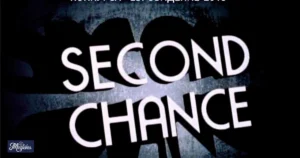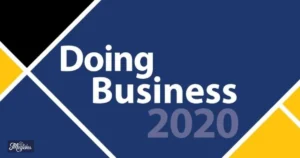“Discover polished alternatives to inform others with professionalism and clarity.”
In a professional setting, it’s essential to communicate information effectively and respectfully. The phrase “Just so you know” is commonly used to provide additional details or updates, but it may not always convey the level of formality or professionalism required. Choosing the right expression can enhance your communication, ensuring that you convey your message in a manner that is both clear and appropriate for the context.
This blog explores various formal alternatives to “Just so you know” that you can use in professional communications. Each phrase is designed to maintain clarity while offering a more sophisticated tone. By incorporating these alternatives, you can improve your interactions with colleagues, clients, and stakeholders, demonstrating your attention to detail and respect for the recipient.
Understanding and applying different ways to convey important information can elevate your communication skills. The alternatives provided here will help you choose the most fitting expression based on the formality of the situation and the relationship with the recipient.
25 Professional Alternatives
1. “For Your Information”
Scenario: When Alex sent a project update to his team, he used this phrase to share important details without appearing overly casual.
Explanation: This phrase is straightforward and formal, used to provide relevant information in a professional manner.
Additional Tip: Ideal for formal emails or reports where clarity is needed.
2. “Please Be Advised”
Scenario: Sarah used this phrase in a memo to inform her colleagues about changes in company policy.
Explanation: This formal expression is used to notify someone of important information, often in written communications.
Additional Tip: Suitable for official announcements or critical updates.
3. “I Wanted to Inform You”
Scenario: Mark used this phrase in a formal meeting to share recent developments with the project team.
Explanation: This phrase conveys a polite intent to provide information, maintaining a professional tone.
Additional Tip: Best for situations where you want to ensure the recipient is informed of new developments.
4. “Please Note”
Scenario: Laura used this expression in a client email to highlight important details about a deliverable.
Explanation: This formal request draws attention to specific information that the recipient needs to be aware of.
Additional Tip: Effective for highlighting key points in formal communications.
5. “I Would Like to Bring to Your Attention”
Scenario: Tom used this phrase to highlight an upcoming deadline in a project status report.
Explanation: This formal phrase is used to direct the recipient’s attention to important details.
Additional Tip: Useful when you need to emphasize specific information.
6. “For Your Awareness”
Scenario: Emily included this phrase in an email to inform her team about changes in meeting schedules.
Explanation: This phrase indicates that the information is being provided to ensure the recipient is aware of relevant updates.
Additional Tip: Suitable for keeping recipients informed of changes or updates.
7. “Please Be Informed”

Scenario: Mark used this phrase in a formal notification to inform staff about new health and safety regulations.
Explanation: This expression formally notifies the recipient of important information or changes.
Additional Tip: Best for formal communications requiring clear and respectful notification.
8. “I Would Like to Make You Aware”
Scenario: Sarah used this phrase in a business email to inform her clients of a policy change.
Explanation: This formal phrase is used to make the recipient aware of significant information.
Additional Tip: Ideal for formal notifications where awareness is crucial.
9. “This Is to Notify You”
Scenario: Laura used this phrase in a report to formally notify stakeholders of upcoming project milestones.
Explanation: This expression provides formal notification of relevant details or updates.
Additional Tip: Effective for formal reports and official communications.
10. “I Am Writing to Inform You”
Scenario: Tom used this phrase in an email to inform his manager about a scheduling conflict.
Explanation: This formal phrase is used to convey important information in a written format.
Additional Tip: Suitable for formal written communications.
11. “I Thought You Should Know”
Scenario: Emily used this phrase in a conversation with a colleague to provide important feedback.
Explanation: This expression conveys the intent to share important information in a more conversational tone.
Additional Tip: Effective for informal professional settings where a more personal touch is appropriate.
12. “Allow Me to Inform You”
Scenario: Mark used this phrase in a presentation to inform the audience of key findings from a research study.
Explanation: This formal phrase introduces information with a sense of authority and respect.
Additional Tip: Useful for formal presentations or public speaking engagements.
13. “I Wanted to Bring to Your Attention”
Scenario: Laura used this phrase in a report to highlight potential issues with a project timeline.
Explanation: This phrase formally directs attention to specific issues or details.
Additional Tip: Best for highlighting important information in formal documents.
14. “I Am Reaching Out to Inform You”
Scenario: Tom used this phrase in an email to inform clients about a change in service delivery.
Explanation: This phrase indicates that the communication is intended to provide important information.
Additional Tip: Effective for professional correspondence where you need to provide updates.
15. “Please Take Note”
Scenario: Sarah used this phrase in an official memo to highlight changes in office procedures.
Explanation: This formal request asks the recipient to pay attention to specific details.
Additional Tip: Suitable for formal memos and official notifications.
16. “I Would Like to Update You On”
Scenario: Laura used this phrase in a project update to inform the team about recent developments.
Explanation: This phrase is used to provide updates and keep the recipient informed.
Additional Tip: Ideal for keeping team members updated on ongoing projects.
17. “This Message Is to Inform You That”
Scenario: Emily used this phrase in an email to notify stakeholders about a change in meeting dates.
Explanation: This formal expression is used to provide clear and direct information.
Additional Tip: Best for formal communications where clarity is essential.
Professional Ways to Say “Thank You for Your Efforts”
18. “I Would Like to Draw Your Attention To”
Scenario: Mark used this phrase in a formal report to highlight a significant finding.
Explanation: This phrase formally directs the recipient’s attention to specific information.
Additional Tip: Effective for emphasizing important points in formal documents.
19. “Please Be Aware That”
Scenario: Tom used this phrase in a business email to inform clients of upcoming changes in terms and conditions.
Explanation: This formal phrase is used to make the recipient aware of important details.
Additional Tip: Suitable for formal notifications where the recipient’s awareness is crucial.
20. “I Am Providing This Information For Your Reference”
Scenario: Sarah used this phrase in a report to provide additional context on a project.
Explanation: This expression indicates that the information is being provided as a reference.
Additional Tip: Useful for providing supplementary information in formal reports.
21. “Please Consider This Information”

Scenario: Laura used this phrase in a proposal to highlight key points for consideration.
Explanation: This formal request asks the recipient to consider specific details or updates.
Additional Tip: Effective for proposals and formal suggestions.
22. “I Am Sharing This Information To Ensure You Are Informed”
Scenario: Emily used this phrase in an email to ensure her team was aware of upcoming deadlines.
Explanation: This phrase emphasizes the intent to keep the recipient informed.
Additional Tip: Best for ensuring that all relevant parties are up-to-date.
23. “I Would Like to Make You Aware of”
Scenario: Tom used this phrase in a formal email to inform his supervisor about a potential issue.
Explanation: This formal expression is used to make the recipient aware of important information.
Additional Tip: Suitable for formal communications where awareness is important.
24. “Please Be Informed That”
Scenario: Mark used this phrase in a formal notification to update stakeholders on a policy change.
Explanation: This phrase is used to formally inform the recipient of important updates.
Additional Tip: Effective for formal notifications and updates.
25. “I Am Writing To Bring To Your Attention”
Scenario: Sarah used this phrase in a business letter to highlight important updates on a project.
Explanation: This formal phrase is used to direct the recipient’s attention to specific information.
Additional Tip: Ideal for formal letters and official communications.
Pros and Cons
Pros:
- Enhanced Professionalism: Using formal alternatives demonstrates a polished and respectful approach.
- Clarity: Provides clear and direct information, avoiding ambiguity.
- Respect: Shows consideration for the recipient’s role and status.
Cons:
- Formality Overuse: Excessive formality might come across as overly rigid or insincere.
- Complexity: Some formal phrases may be too verbose or complicated for simple messages.
- Cultural Sensitivity: Certain formal expressions might not be suitable in all cultural contexts.
Conclusion
Using professional alternatives to “Just so you know” can significantly enhance your communication by providing a more refined and respectful approach. Each phrase offers a formal way to convey information, ensuring clarity and maintaining professionalism.
By choosing the right expression based on the context and relationship with the recipient, you can effectively inform others while upholding a polished communication style. Tailor your language to fit the formality of the situation to achieve the best results in your professional interactions.

Hi, I’m Lauren Reynolds: I bring creativity to English lessons, mixing fun with learning. My goal is to inspire students to explore and enjoy the language.










